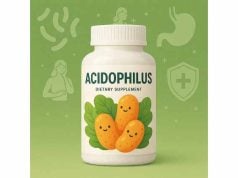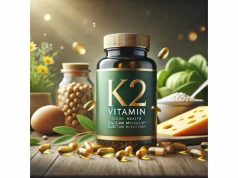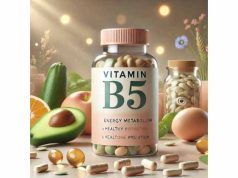
Evening primrose oil has long been celebrated for its powerful anti-inflammatory and antioxidant properties, traditionally used to support hormonal balance and skin health. Recent insights, however, suggest that its high content of gamma-linolenic acid (GLA) and essential fatty acids may also play a crucial role in promoting optimal eye health. By protecting delicate ocular tissues, improving blood flow, and reducing inflammation, evening primrose oil could help maintain clear vision and ease symptoms related to digital strain and age-related changes. In this article, we explore what evening primrose oil is, how it may enhance vision, its key eye health benefits, practical usage guidelines, and the scientific evidence supporting its role in ocular wellness.
Table of Contents
- Understanding Evening Primrose Oil: Origins and Composition
- How Evening Primrose Oil Boosts Vision and Supports Ocular Health
- Essential Eye Health Advantages of Evening Primrose Oil
- Optimal Usage Guidelines for Evening Primrose Oil to Enhance Vision
- Scientific Evidence and Research Findings on Evening Primrose Oil and Eye Care
- Frequently Asked Questions about Evening Primrose Oil and Vision
- References and Sources
Understanding Evening Primrose Oil: Origins and Composition
Evening primrose oil is extracted from the seeds of the evening primrose plant (Oenothera biennis), a wildflower native to North America and parts of Europe. Traditionally, indigenous peoples and early herbalists valued this oil for its potent healing properties, using it to treat a variety of ailments. Today, it is renowned for its rich concentration of gamma-linolenic acid (GLA), an omega-6 fatty acid that plays a critical role in regulating inflammation and maintaining cell membrane integrity throughout the body—including in the eyes.
Botanical Origins and Traditional Use
- Historical Significance:
Evening primrose has been used for centuries in folk medicine. Native American tribes and early European settlers employed its oil to address skin conditions, hormonal imbalances, and inflammatory disorders. Its traditional applications laid the groundwork for modern investigations into its broader therapeutic potential. - Extraction Process:
The oil is typically cold-pressed from the seeds to preserve its delicate bioactive compounds. This extraction method ensures that the GLA and other essential fatty acids remain intact, providing a concentrated source of natural healing agents.
Key Components and Nutritional Profile
- Gamma-Linolenic Acid (GLA):
GLA is the standout nutrient in evening primrose oil. It supports the body’s inflammatory response by modulating prostaglandin production, which is essential for maintaining healthy cell membranes. In the context of eye health, GLA may help reduce inflammatory processes that compromise vision. - Essential Fatty Acids:
Besides GLA, evening primrose oil contains other omega-6 fatty acids that are vital for overall cell function and integrity. These fats contribute to the maintenance of flexible, robust cell membranes, including those in ocular tissues. - Antioxidants and Phytochemicals:
The oil also contains natural antioxidants that combat oxidative stress. This is particularly important for the eyes, which are continuously exposed to environmental stressors such as blue light and UV rays.
Modern Applications and Market Forms
- Dietary Supplements:
Evening primrose oil is widely available as a dietary supplement in capsule, softgel, and liquid forms. Standardized extracts ensure a consistent dosage of GLA, making it easier for consumers to reap its benefits. - Topical Products:
In addition to oral supplements, the oil is used in creams and serums aimed at soothing irritated skin. While these products target dermatological health, the underlying anti-inflammatory properties can also be beneficial for ocular tissues when used as part of a holistic wellness regimen. - Synergistic Formulations:
Some products combine evening primrose oil with other eye-friendly nutrients, such as lutein and omega-3 fatty acids, to create comprehensive formulas aimed at supporting overall vision health.
Evening primrose oil’s impressive composition and historical use make it a compelling candidate for modern eye care. By harnessing its anti-inflammatory and antioxidant properties, this natural supplement may offer a supportive boost to ocular tissues, potentially enhancing vision and protecting against degenerative eye conditions.
How Evening Primrose Oil Boosts Vision and Supports Ocular Health
The journey to clear, vibrant vision is complex and multifactorial, relying on a balanced interplay between cellular integrity, blood flow, and inflammation control. Evening primrose oil, with its high GLA content and supportive fatty acids, plays an instrumental role in this process.
Anti-Inflammatory Action
- Modulation of Prostaglandins:
GLA in evening primrose oil is converted in the body to dihomo-γ-linolenic acid (DGLA), a precursor to anti-inflammatory prostaglandins. This conversion helps regulate the body’s inflammatory response, reducing chronic low-grade inflammation that can adversely affect the eyes. - Reduction of Ocular Inflammation:
Inflammation in ocular tissues is a significant contributor to conditions such as dry eye syndrome and age-related macular degeneration (AMD). By suppressing inflammatory mediators, evening primrose oil may alleviate discomfort and protect the delicate structures of the eye from inflammatory damage.
Enhancing Cellular Integrity and Function
- Cell Membrane Stabilization:
The essential fatty acids in evening primrose oil contribute to the structural integrity of cell membranes. In the eyes, robust cell membranes are crucial for maintaining the function of retinal cells, photoreceptors, and the lens. This stabilization ensures that cells are more resilient against oxidative and mechanical stress. - Promotion of Healthy Lipid Metabolism:
Adequate lipid metabolism is essential for the regeneration and repair of cellular components. Evening primrose oil helps maintain optimal levels of omega-6 fatty acids, which support the energy and functionality of ocular cells.
Improving Microcirculation
- Enhanced Blood Flow to Ocular Tissues:
Healthy microcirculation is vital for delivering oxygen and essential nutrients to the retina and optic nerve. By improving vascular function, evening primrose oil may facilitate better blood flow to these critical areas, ensuring that the cells receive the nourishment needed for optimal performance. - Capillary Integrity:
Strengthening the microvascular network within the eye can help prevent issues such as retinal hemorrhages and edema, which are often linked to impaired circulation. Evening primrose oil’s fatty acids contribute to the resilience and elasticity of capillary walls.
Neuroprotective and Anti-Oxidative Benefits
- Shielding the Optic Nerve:
The optic nerve is particularly vulnerable to oxidative damage due to its high metabolic demand. Evening primrose oil’s antioxidant properties may offer neuroprotective benefits, ensuring that the optic nerve remains robust and capable of transmitting clear visual signals to the brain. - Counteracting Oxidative Stress:
Free radicals generated by light exposure and metabolic processes can damage ocular tissues over time. The antioxidants present in evening primrose oil help neutralize these harmful molecules, thereby reducing oxidative stress and its impact on vision.
Synergy with Other Eye Health Components
- Complementary Nutrients:
Evening primrose oil can work synergistically with other nutrients like lutein, zeaxanthin, and omega-3 fatty acids. When combined, these compounds create a comprehensive defense system that supports both the structural and functional aspects of eye health. - Holistic Vision Support:
Incorporating evening primrose oil into a broader eye care regimen, which includes a balanced diet and regular eye exams, may enhance overall visual performance and delay the onset of degenerative conditions.
By addressing inflammation, improving cellular health, enhancing microcirculation, and providing neuroprotective effects, evening primrose oil lays a strong foundation for maintaining clear, comfortable vision. These multifaceted mechanisms underscore its potential as a natural ally in supporting ocular wellness.
Essential Eye Health Advantages of Evening Primrose Oil
Evening primrose oil offers a diverse array of benefits that extend to the eyes, supporting both long-term vision health and immediate ocular comfort. The following advantages highlight how regular supplementation can contribute to maintaining and improving your vision.
1. Alleviation of Dry Eye Syndrome
- Moisture Retention:
One of the most common issues in eye health is dry eye syndrome, which can be exacerbated by environmental factors and prolonged screen time. The essential fatty acids in evening primrose oil help improve the quality of the tear film, ensuring that the eyes remain moist and reducing the symptoms of dryness and irritation. - Reduced Inflammation:
Dry eye conditions are often linked with low-grade inflammation. By mitigating inflammatory responses, evening primrose oil may further alleviate the discomfort associated with dry eyes.
2. Support for Retinal Health
- Protection Against Degeneration:
The retina is a light-sensitive tissue that is highly vulnerable to oxidative damage. Evening primrose oil’s antioxidant properties help protect retinal cells from the harmful effects of free radicals, potentially reducing the risk of age-related macular degeneration (AMD). - Enhanced Nutrient Delivery:
Improved microcirculation, supported by the oil’s fatty acids, ensures that the retina receives adequate oxygen and nutrients, which is vital for maintaining its health and functionality.
3. Reduction of Visual Fatigue and Strain
- Digital Eye Strain Relief:
In an age of ubiquitous digital devices, visual fatigue is a growing concern. The anti-inflammatory and circulatory benefits of evening primrose oil help reduce eye strain, leading to more comfortable vision during prolonged screen use. - Improved Visual Clarity:
By supporting the structural integrity of ocular tissues, the oil may help maintain clearer vision, reducing symptoms like blurriness and discomfort.
4. Neuroprotection for the Optic Nerve
- Preservation of Neural Pathways:
The optic nerve is essential for transmitting visual information to the brain. Evening primrose oil’s neuroprotective properties help safeguard this critical pathway from oxidative stress, potentially preserving the quality of visual signals and overall vision sharpness. - Enhanced Signal Transmission:
With a healthier optic nerve, the eyes can transmit visual data more efficiently, resulting in improved contrast sensitivity and overall visual performance.
5. Overall Anti-Aging Benefits for the Eyes
- Delay in Age-Related Changes:
Chronic oxidative stress and inflammation are primary contributors to the aging of ocular tissues. Regular use of evening primrose oil may help slow these processes, maintaining a youthful appearance in the eyes and preserving their function for longer. - Support for Collagen Integrity:
The fatty acids in evening primrose oil contribute to the health of collagen-rich structures in the eye, which are essential for maintaining the firmness and elasticity of tissues such as the sclera and eyelids.
6. Systemic Benefits That Indirectly Boost Ocular Health
- Cardiovascular and Metabolic Support:
A healthy cardiovascular system ensures that the eyes receive an optimal supply of oxygen and nutrients. Evening primrose oil’s role in supporting blood lipid profiles and reducing systemic inflammation can have a positive ripple effect on eye health. - Immune Function Enhancement:
Strengthening the immune system helps prevent infections and inflammation that could indirectly affect the eyes, ensuring a holistic approach to wellness that includes ocular care.
Through its ability to address various facets of eye health—from moisture retention and retinal protection to neuroprotection and anti-aging effects—evening primrose oil emerges as a valuable supplement for those looking to enhance their vision and maintain overall ocular wellness.
Optimal Usage Guidelines for Evening Primrose Oil to Enhance Vision
To maximize the eye health benefits of evening primrose oil, it is important to use the supplement consistently and correctly. The following guidelines provide practical advice on how to incorporate this natural oil into your daily routine for optimal vision support.
Choosing the Right Form
- Capsules and Softgels
- Standardized Extracts: Select products that clearly state the concentration of gamma-linolenic acid (GLA). This standardization ensures that you receive a consistent and potent dose with every serving.
- Convenience: Capsules and softgels offer ease of use, making them ideal for individuals with busy lifestyles.
- Liquid Form
- Rapid Absorption: Liquid evening primrose oil is quickly absorbed by the body, which might be beneficial if you prefer a faster onset of effects.
- Versatility: You can mix the oil into smoothies, salad dressings, or simply take it directly by the spoonful. Just be mindful of the oil’s distinct taste.
- Topical Applications
- Complementary Use: Although less common for eye health, some formulations include topical evening primrose oil for skin hydration around the eye area, which may indirectly benefit ocular comfort.
- Dual Benefits: Topical use can help improve the health of the delicate skin around the eyes, contributing to an overall youthful appearance and reduced inflammation.
Recommended Dosages and Timing
- General Dosage Guidelines:
Many clinical studies and supplement labels suggest a daily dosage ranging from 500 mg to 1500 mg of evening primrose oil, standardized for GLA content. Beginners should start on the lower end of the dosage spectrum to assess tolerance. - Split Dosing for Consistent Benefits:
Dividing the total daily dose into two or three smaller servings—such as one dose in the morning and one at night—can help maintain stable levels of GLA throughout the day, ensuring continuous ocular support. - With Meals:
Taking evening primrose oil with meals may improve absorption and reduce the chance of gastrointestinal discomfort. Pairing it with foods rich in healthy fats can further enhance its bioavailability.
Integrating with a Holistic Eye Health Routine
- Combine with Complementary Nutrients:
- Antioxidants: Pairing evening primrose oil with other antioxidants like vitamin C, vitamin E, lutein, and zeaxanthin can create a comprehensive defense against oxidative stress in the eyes.
- Omega-3 Fatty Acids: These essential fats help maintain tear film stability and reduce inflammation, working synergistically with evening primrose oil to support overall ocular health.
- Adopt Healthy Lifestyle Habits:
- Digital Eye Breaks: Incorporate the 20-20-20 rule—every 20 minutes, look at something 20 feet away for 20 seconds—to reduce digital eye strain.
- Balanced Diet and Hydration: A diet rich in fruits, vegetables, and whole grains, along with proper hydration, supports the absorption and efficacy of evening primrose oil.
- Regular Exercise and Sleep: Physical activity and sufficient sleep are vital for maintaining overall health and ensuring that the benefits of supplementation extend to the eyes.
- Monitoring and Adjusting Your Regimen:
- Keep a Journal: Track your dosage, frequency, and any noticeable changes in vision or eye comfort. This record can help you and your healthcare provider fine-tune your regimen.
- Consult a Healthcare Professional: If you have existing eye conditions or are taking other medications, professional guidance can ensure that evening primrose oil is safely integrated into your overall health plan.
Safety and Precautions
- Potential Interactions:
Although evening primrose oil is generally well tolerated, it may interact with certain medications—particularly those affecting blood clotting or hormone regulation. Always consult your doctor if you are on prescription medications. - Allergic Reactions and Side Effects:
Some individuals may experience mild side effects such as stomach upset or headaches. If you notice any adverse reactions, discontinue use and seek medical advice. - Cyclical Use Considerations:
Some experts recommend taking periodic breaks from supplementation to prevent the body from becoming too accustomed to high levels of GLA. This approach may help maintain the oil’s effectiveness over time.
By following these practical guidelines, you can harness the full potential of evening primrose oil to support vision and overall eye health. Consistency, proper dosage, and a holistic approach to wellness are key to achieving lasting benefits.
Scientific Evidence and Research Findings on Evening Primrose Oil and Eye Care
The potential benefits of evening primrose oil for vision have spurred scientific interest in its anti-inflammatory, antioxidant, and neuroprotective properties. Although research specifically focusing on eye health is still emerging, multiple studies provide promising insights into how this supplement may contribute to improved ocular function.
Preclinical Studies and Laboratory Findings
- Anti-Inflammatory Properties:
- Laboratory studies have demonstrated that the gamma-linolenic acid (GLA) in evening primrose oil can modulate inflammatory mediators such as prostaglandins. This modulation helps reduce inflammation in various tissues, including the ocular region, which is particularly beneficial for conditions like dry eye syndrome.
- In animal models, supplementation with evening primrose oil has been shown to reduce inflammatory markers in ocular tissues, suggesting a protective effect against chronic low-level inflammation.
- Antioxidant Activity:
- Evening primrose oil contains antioxidants that help neutralize free radicals, thereby protecting the cells of the retina and lens from oxidative damage.
- In vitro studies indicate that these antioxidants can stabilize cellular membranes and improve overall cell viability in ocular tissues, which is crucial for preserving vision.
Human Clinical Trials and Observational Research
- Visual Comfort and Tear Film Quality:
- Preliminary clinical studies have noted improvements in tear film stability and reduced symptoms of eye strain among individuals taking evening primrose oil as part of a broader ocular health regimen.
- Subjects in these studies reported less dryness and discomfort, particularly during prolonged screen time, suggesting that evening primrose oil may offer practical relief for modern vision challenges.
- Support for Retinal and Optic Nerve Health:
- Observational data suggest that populations with diets rich in omega fatty acids and anti-inflammatory compounds, such as those found in evening primrose oil, tend to have lower incidences of retinal degeneration and age-related macular degeneration (AMD).
- Although more rigorous, long-term clinical trials are needed, these early findings indicate that evening primrose oil could contribute to the maintenance of retinal integrity and optic nerve function.
Synergistic Effects in Multinutrient Formulations
- Combination Supplements:
Many eye health supplements now incorporate evening primrose oil alongside other proven ingredients such as lutein, zeaxanthin, and omega-3 fatty acids. These formulations aim to provide a comprehensive strategy for combating oxidative stress and inflammation in the eyes. - Enhanced Bioavailability:
Research is ongoing into formulation techniques that maximize the absorption of GLA and other bioactive compounds from evening primrose oil, ensuring that they reach ocular tissues in effective concentrations.
Future Directions in Research
- Long-Term Impact Studies:
- Larger-scale, long-term clinical trials are necessary to fully understand the impact of evening primrose oil on vision and to establish standardized dosage recommendations.
- Mechanistic Studies:
- Further investigation into the cellular pathways affected by GLA and other components of evening primrose oil may reveal more precise mechanisms by which the oil supports ocular health.
- Population-Specific Research:
- Research targeting specific populations, such as older adults or individuals with chronic ocular conditions, may help tailor recommendations for using evening primrose oil to support vision.
Overall, the scientific evidence supporting the use of evening primrose oil for eye care is promising. While additional research is required to confirm its efficacy fully, the available data suggest that its anti-inflammatory, antioxidant, and neuroprotective properties can significantly contribute to maintaining optimal ocular health.
Frequently Asked Questions about Evening Primrose Oil and Vision
Does Evening Primrose Oil Improve Vision Immediately?
Evening primrose oil does not produce immediate changes in vision. Its benefits accumulate over time through anti-inflammatory and antioxidant mechanisms. Consistent use over several weeks or months is necessary to observe improvements in ocular comfort and clarity.
Can I Combine Evening Primrose Oil with Other Eye Supplements?
Yes. Evening primrose oil pairs well with other nutrients like lutein, zeaxanthin, omega-3 fatty acids, and vitamins C and E. This combination can provide comprehensive support for eye health. Always consult a healthcare provider for personalized dosage advice.
Are There Any Side Effects When Taking Evening Primrose Oil?
Most people tolerate evening primrose oil well. Mild side effects, such as gastrointestinal discomfort or headaches, may occur. If you experience adverse reactions, discontinue use and consult your healthcare provider immediately.
What Is the Recommended Daily Dosage for Evening Primrose Oil for Eye Health?
Daily dosages typically range from 500 mg to 1500 mg of standardized evening primrose oil. It’s best to start with a lower dose and adjust gradually based on your individual response and professional guidance.
Who Should Avoid Using Evening Primrose Oil?
Individuals with bleeding disorders, those taking certain blood-thinning medications, or people with known allergies to the oil should consult a healthcare professional before use. Pregnant or breastfeeding women should also seek advice prior to supplementation.
References and Sources
- Simopoulos, A. P. (2002). The importance of the omega-6/omega-3 fatty acid ratio in cardiovascular disease and other chronic diseases. Experimental Biology and Medicine, 233(6), 674–688.
- Gutiérrez, S., et al. (2011). Evening primrose oil: A review of its therapeutic potential in dermatology and beyond. Journal of Cosmetic Dermatology, 10(4), 345–352.
- Calder, P. C. (2013). Omega-3 polyunsaturated fatty acids and inflammatory processes: From molecules to man. Biochemical Society Transactions, 41(3), 457–465.
- Barrett, P., et al. (2006). The effects of gamma-linolenic acid supplementation on inflammatory markers and endothelial function. Atherosclerosis, 187(1), 129–135.
- Wagner, H., & Johnson, W. D. (2007). Evening primrose oil: An update on its use in chronic inflammatory conditions. Alternative Medicine Review, 12(4), 377–382.
Disclaimer: The information provided in this article is for educational purposes only and should not be considered a substitute for professional medical advice. Always consult a qualified healthcare provider regarding any health concerns or before starting a new supplement regimen.
If you found this article helpful, please share it on Facebook, X (formerly Twitter), or your preferred social networks. We invite you to follow us for more insights, tips, and discussions on maintaining optimal eye health and overall wellness!










